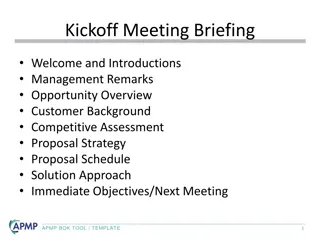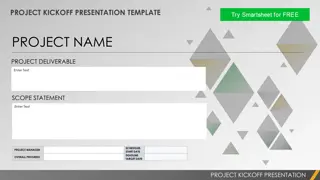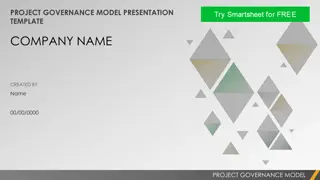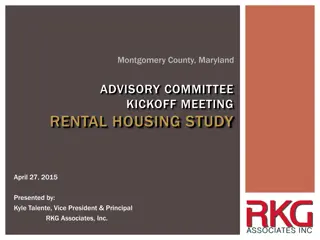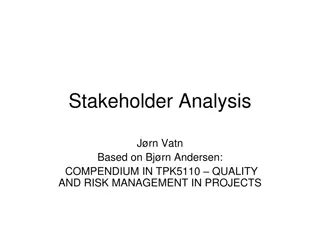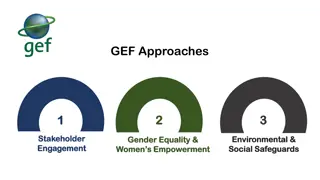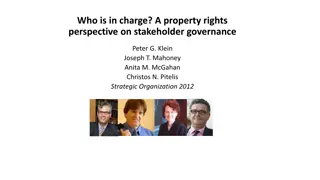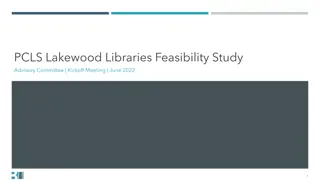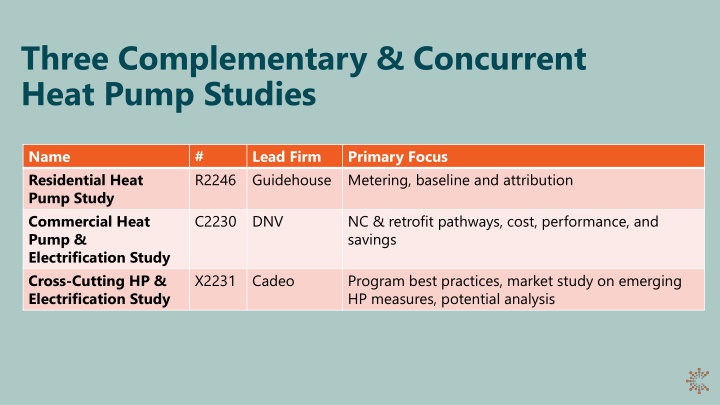
Comprehensive Heat Pump and Electrification Study Overview
This overview showcases three concurrent studies focusing on residential and commercial heat pump utilization, electrification, and market analysis. The research aims to identify best practices, emerging measures, and potential for beneficial electrification in Connecticut. Research outputs include market characterizations, electrification measures, program recommendations, and more. Activities inform crucial aspects such as market potentials, best practices, and program benchmarking.
Download Presentation

Please find below an Image/Link to download the presentation.
The content on the website is provided AS IS for your information and personal use only. It may not be sold, licensed, or shared on other websites without obtaining consent from the author. If you encounter any issues during the download, it is possible that the publisher has removed the file from their server.
You are allowed to download the files provided on this website for personal or commercial use, subject to the condition that they are used lawfully. All files are the property of their respective owners.
The content on the website is provided AS IS for your information and personal use only. It may not be sold, licensed, or shared on other websites without obtaining consent from the author.
E N D
Presentation Transcript
Three Complementary & Concurrent Heat Pump Studies Name Residential Heat Pump Study Commercial Heat Pump & Electrification Study Cross-Cutting HP & Electrification Study # R2246 Lead Firm Guidehouse Primary Focus Metering, baseline and attribution C2230 DNV NC & retrofit pathways, cost, performance, and savings X2231 Cadeo Program best practices, market study on emerging HP measures, potential analysis
December 14, 2022 CT X2231 Heat Pump & Electrification Study Kickoff meeting
Research Objectives 1. Illuminate best practices regarding fossil fuel to electric conversion and program design in existing and new buildings in the residential, industrial, and commercial sectors. 2. Identify and characterize new and emerging target measures to help support electrification efforts in residential, commercial, and industrial buildings. 3. Analyze the technical, economic, and market potential for beneficial electrification in CT.
Research Outputs 1. A characterization of existing conditions in CT related to beneficial electrification, inclusive of current programs, building stock, equipment saturations, and demand- and supply-side market actor readiness. 2. A detailing of electrification measures (technology maturity, relevant applications, strengths and weaknesses, market availability, and mapping of tech and building types) for consideration in CT. 3. A summary of programmatic and policy best practices for promoting beneficial electrification observed outside of CT that can inform efforts within the state. 4. An estimate of the market potential associated with identified electrification measures (for which sufficient data exists to support modeling) in CT. 5. A list of specific programmatic and/or policy recommendations for realizing the qualitative identified and quantitatively modeled electrification potential; recommendations will be actionable, specific to CT s existing conditions, and leverage observed best practices.
How Activities Inform Research Outputs Characterize Existing Conditions Identify Electrification Measures Identify Best Practices Estimate Market Potential Provide Recommendations Data Planning & Review X Program Benchmarking X X X Market Characterization X X X X Potentials Modeling X X X X Program and Policy Recommendations X X X X X
Data Planning & Review 1. 2. 3. 4. Create an exhaustive list of all market ready building electrification measures Enumerate research questions to answer and market intelligence to gather Identify any relevant existing information (recent studies, RASS, etc.) Map research questions and market intelligence needs to existing secondary sources Review whether the existing sources are sufficient for this purpose Identify and prioritize information gaps (i.e., where primary data collection would be beneficial) Map information gaps to primary data collection activities that are happening as part of this work, as well as concurrent CT HP research (i.e., which study is best positioned to provide each piece of information (and when) 5. 6. 7.
Program Benchmarking 1. Review current and proposed building electrification efforts in CT. 2. Review building electrification efforts in other states, identify barriers, solutions and lessons learned. 3. Provide recommendations tailored to CT market based on our review of other programs that will help the state make progress on building electrification and decarbonization efforts. Methodology: Literature review and interviews with up to five project managers or researchers.
Market Characterization 1. Assess each building electrification measure: Technology maturity Current and anticipated future adoption rates Supply of technology Barriers and opportunities Approximate cost Best applications Workforce readiness (identify gaps in contractor and distributor capabilities for supporting each electrification measures)
Market Characterization (cont.) 2. Gather information regarding upcoming or emerging (i.e., not yet market ready) electrification measures. Discuss with supply side what are they working on, what are they bringing to market next, what is the target audience, consider future role in CT Methodology: Literature review and interviews with: Supply-side: manufacturers (n=10), distributors (n=10), contractors (n=20). Demand-side: new construction (building firms=9), building managers and owners (MF, C&I) (n=30).
Potential Modeling 1. Conduct a workshop with EA Team and stakeholders to define the model (granularity, duration, scenarios, programmatic, and nonprogrammatic measures). 2. Prepare inputs from market assessment and concurrent HP studies. 3. Conduct load research for measures and building to calculate net load. 4. Estimate technical, economic and achievable potential model for heat pumps. Methodology: Model and documentation.
Program and Policy Recommendations Aggregate results to provide actionable and specific recommendations for designing and/or implementing beneficial electrification efforts in CT. Likely to be sector and/or measure specific recommendations. Likely to include time-based recommendations (short, medium and long term).
Timeline Activities Period Data Planning and Review Dec 2022 Jan 2023 Program Benchmarking Dec 2022 Mar 2023 Market Characterization Jan 2023 Dec 2023 Potential Modeling Nov 2023 Mar 2024 Program and Policy Recommendations Feb 2024 Apr 2024
Budget Activities Budget Data Planning and Review $32,000 Program Benchmarking $45,000 Market Characterization $160,000 Potential Modeling $118,000 Program and Policy Recommendations $45,000 Total $400,000






